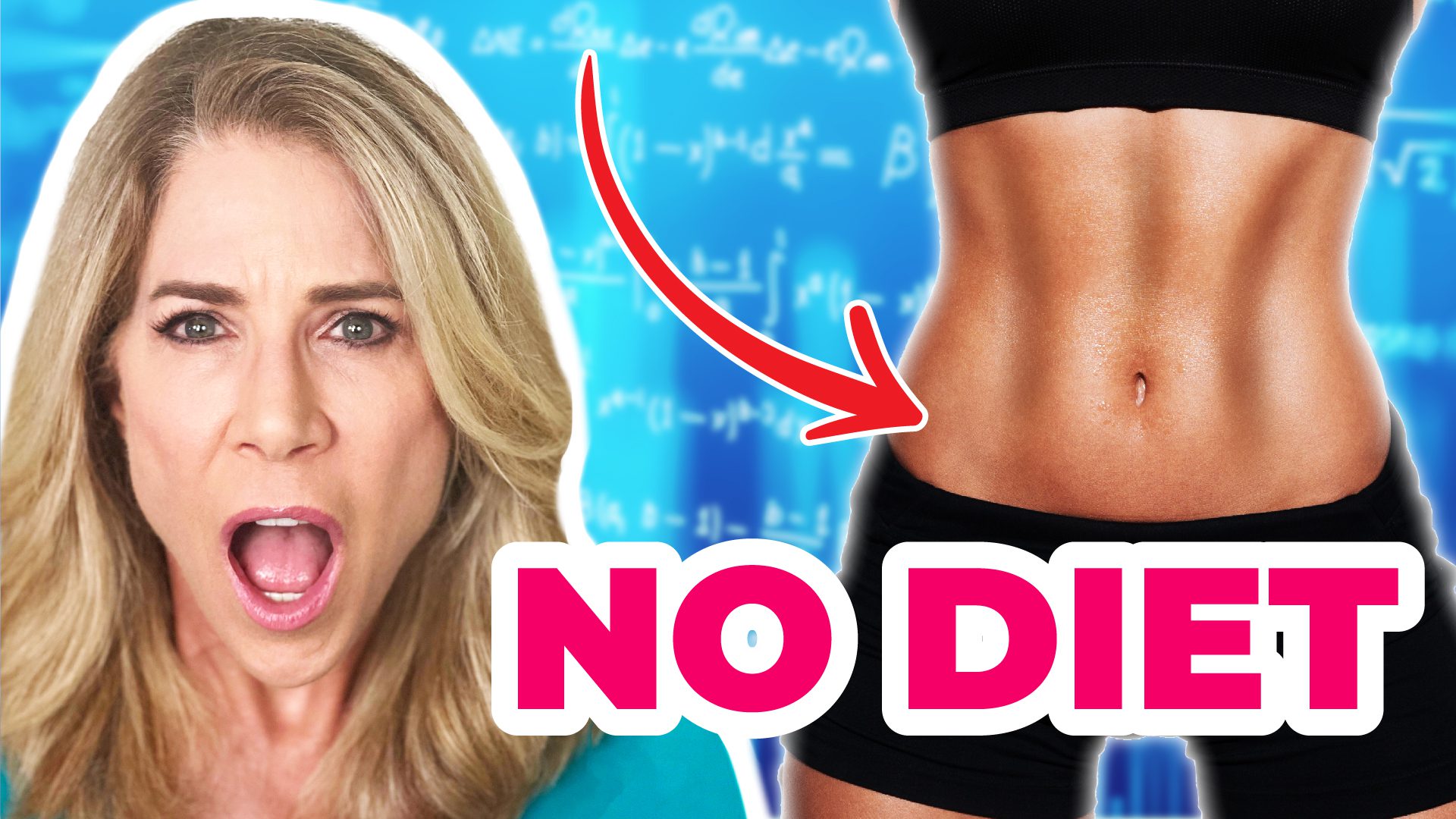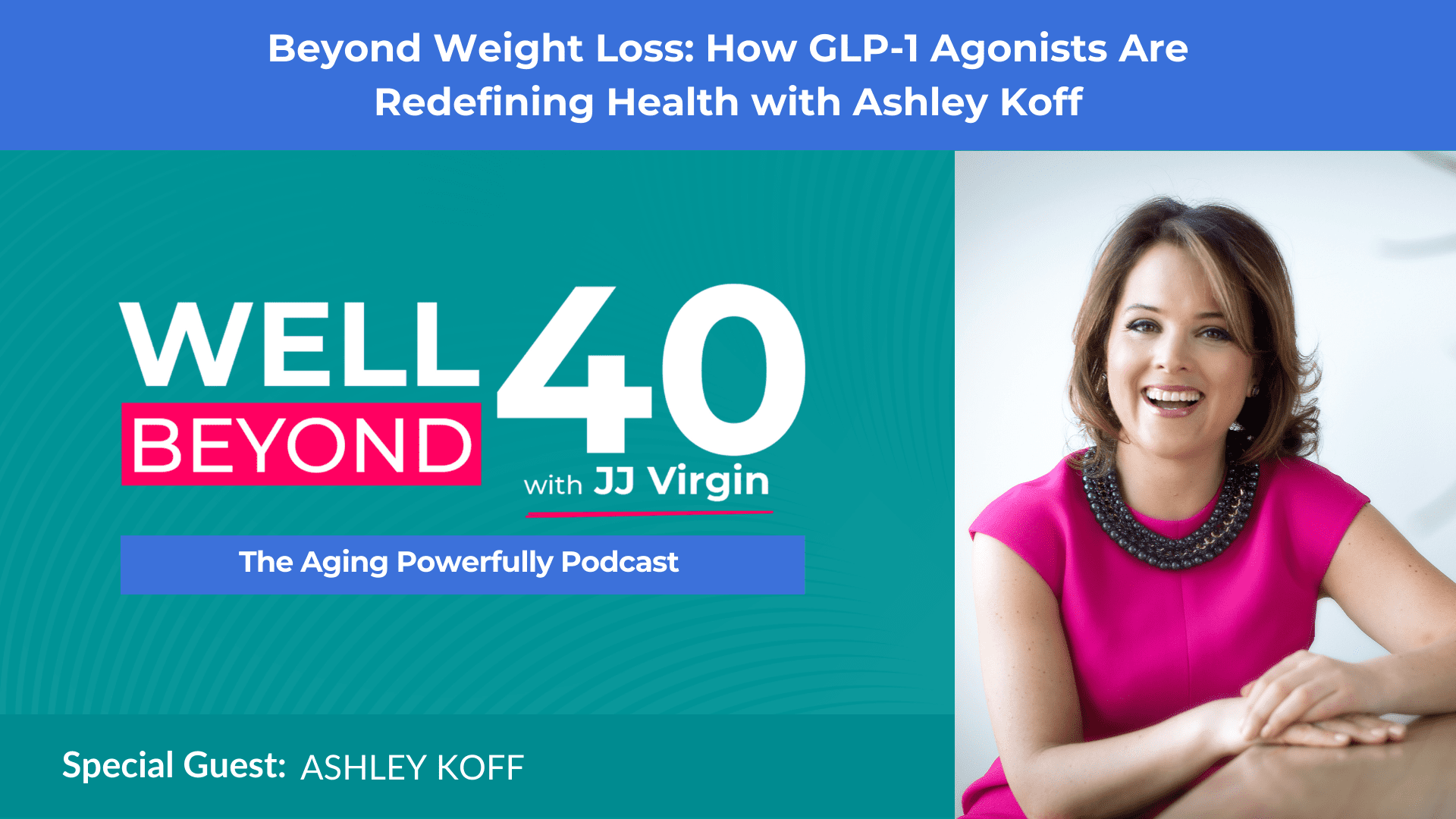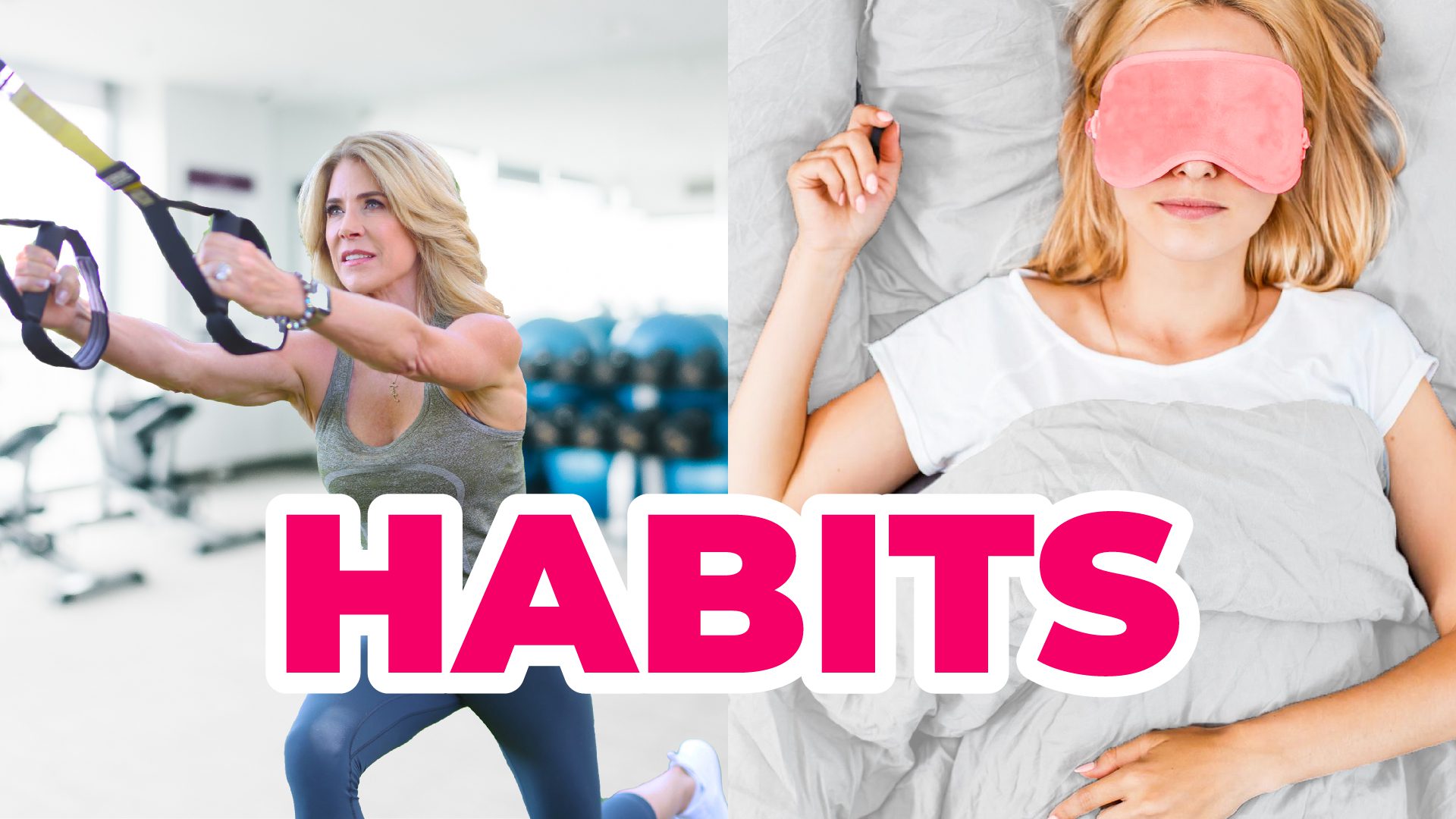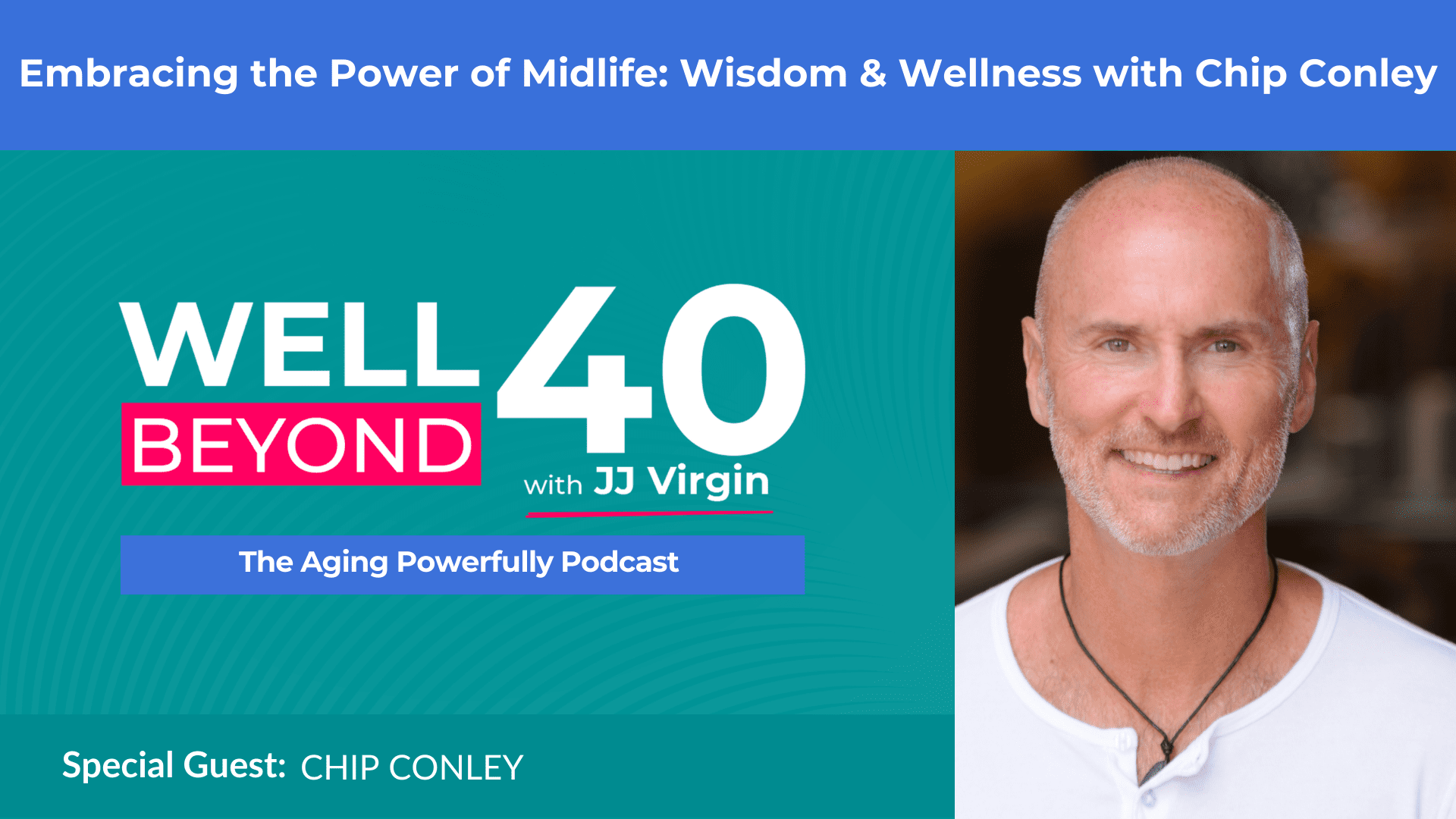Four Strategies That Make a Big Difference
Are you grappling with persistent belly fat and wondering if it affects your health?
The truth is, belly fat can indeed have detrimental effects on your well-being. Many aren't aware of its deep-rooted consequences, including chronic inflammation, metabolic disruptions, and increased risk for lifestyle-related illnesses.
But let me tell you a secret: You can lose belly fat without dieting.
In today's episode, rather than suggesting yet another diet, I’ll unveil four science-backed fat-burning strategies that are especially effective for women over 40. And trust me, the fourth one is bound to take you by surprise…
Timestamps
00:01:15 – Why is belly fat such a big problem?
00:05:02 – Finding out where you stand
00:06:19 – What do you do about it? Four areas of focus
00:07:14 – This kind of cardio is key
00:09:53 – Here’s how heavy you should be lifting
00:11:10 – How to lower your blood sugar response to a meal
00:12:36 – Building resilience in your nervous system
00:15:04 – Without this, you will not be able to burn fat or build muscle
00:16:02 – Add this to your diet to burn belly fat
00:17:55 – Do this to upgrade the type of fat you have
Resources Mentioned in this episode
Watch the FULL VIDEO on my YouTube Channel
Learn how foods cause leaky gut in The Virgin Diet
Get a DEXA scan
Reignite Wellness™ All-In-One Shakes
Kooru cold plunge: Use code JJVIP500 for $500 off
Video: What is Brown Fat & How Does it Help With Weight Loss?
ATHE_Transcript_Ep 594_Scientifically Proven Ways to Lose BELLY FAT Without Dieting
JJ Virgin: [00:00:00] I'm JJ Virgin, PhD dropout, sorry mom, turned four time New York Times best selling author. Yes, I'm a certified nutrition specialist, fitness hall of famer, and I speak at health conferences and trainings around the globe. But I'm driven by my insatiable curiosity and love of science to keep asking questions, digging for answers, and sharing the information I uncover with as many people as I can.
And that's why I created the Well Beyond 40 podcast to synthesize and simplify the science of health into actionable strategies to help you thrive. In each episode, we'll talk about what's working in the world of wellness, from personalized nutrition and healing your metabolism, to healthy aging and prescriptive fitness.
Join me on the journey to better health, so you can love how you look and feel right now and have the energy to play full out at 100.[00:01:00]
If you want to lose belly fat, guess what? You don't have to go on a diet. What? These four strategies I'm sharing can make a big impact, especially if you do all of them. And I'm betting number four will surprise you. But first, beyond the aesthetic part, why is belly fat such a big problem? So first of all, we got two basic kinds of fat.
We got subcutaneous fat, you hear that pinch and inch, and then we have this visceral fat. Or the VAT fat. And that's really what I'm talking about here. So visceral adipose tissue, VAT fat, is surrounding all those internal organs. It's deep in the abdominal cavity. And so it's things like the liver, the pancreas, the intestines.
It's accumulating here. And that is what gives you that apple shape. Now, again, subcutaneous, you can pinch it, right? Remember the old pinch and inch? And people have more subcutaneous, they might have like more around their thighs, more [00:02:00] around their hips. They're more pear shaped. Bet you haven't heard the apple and the pear in a while.
Now the reason that VAT fat is so bad is because of what it does to your overall health. First of all, bad for your metabolism, bad metabolic impact, because visceral adipose tissue is actually more metabolically active and it releases more of these inflammatory cytokines and free fatty acids into the bloodstream.
So when this happens, these substances can interfere with insulin signaling, actually promote insulin resistance, and contribute to the development of a whole bunch of bad stuff like type 2 diabetes. high blood pressure, and cardiovascular disease. So, I hope you're thinking, I really don't want the VAT fat and I want to get rid of the VAT fat.
So, what are the things that cause VAT fat? Well, one of them, I always used to say, okay, if this is bigger, this is my stress belly, because elevated cortisol levels, stress, [00:03:00] can do a number on VAT fat. In fact, studies show that excess cortisol can promote the storage of fat. In the abdominal region, here's what goes on.
First of all, cortisol, high stress, stimulates the breakdown of muscle protein, which we never want to have happen. Then you've got these amino acids released. Then they're converted to sugar by the liver. Then your blood sugar is elevated, which of course triggers an insulin release. Then that insulin release promotes the storage of that sugar as fat.
Now, cortisol is one, insulin is another driver for VAT fat, and insulin resistance can contribute to VAT fat in a variety of different ways. First of all, the cells become less responsive to insulin. When that happens, what does the body do? It produces more insulin and when you have higher insulin levels, that then promotes fat storage and especially fat in the abdominal area.
When your body starts to become resistant to insulin, it makes it way harder to [00:04:00] burn off stored fat. Then this means that your body is going to have more fat accumulate. The other one besides Cortisol and insulin is inflammation because chronic inflammation is another driver of that fat. So when you have ongoing inflammation in your body, and here's the challenge, more fat, more inflammation, more fat.
But when you have more inflammation, it's harder for your body to strike a good balance between storing fat and breaking it down. This can actually cause more fat cells to grow in your abdominal area. Plus, inflammation makes it hard for your body to use stored fat for energy. And guess what that means?
Even more fat accumulating around your waist. Now, when there's too much inflammation and too much belly fat, It can make it even harder for your body to use insulin properly. So you can see how this whole thing becomes a super vicious cycle with inflammation and insulin resistance keep adding more fat here.
So what's happening? We've got cortisol, we've got insulin and inflammation as these big [00:05:00] players. Now, what do you do about it? So first of all, before you do anything about it, you really got to know how big of a problem it is. And there's a couple different ways to look at it. The very best way you can do it is to go get something called a DEXA.
Body scan. We used to do these only for bone mineral density. Now they have the software so they can see a couple different key things on your body. They can see your body fat and everything else, your fat free mass, but more specifically in your body fat, they can see where the fat is. And you might go, I know where it is.
You don't really know till you look. The other key thing you're going to find out here is In your fat free mass, how much is skeletal muscle? How balanced is that skeletal muscle? Do you have enough of that skeletal muscle? Because remember, if you're losing weight, but you're losing skeletal muscle, you're making yourself worse, not better.
Now, there's another piece to that. If you're losing weight without losing your waist, you're also making yourself worse. So one of the simplest tools that you can use to really help you monitor visceral adipose tissue, it's an easy [00:06:00] one. It's a tape measure. And what you want to do is measure your waist and compare it to your height.
And you want to make sure, again, if you are trying to lose weight, you want to hold on to your muscle, or better yet, increase it, and lose body fat. Okay? Super duper important. Once you know where it is, how much you have, next step is, what do you do about it? So I'm going to give you four areas to focus on besides dieting.
Now, here's the thing. Okay, I'm saying you don't have to diet, but of course, if your diet's upgraded. It's going to work way better. So I'm going to give you one thing to increase in your diet that's going to help here. Spoiler alert, these are going to work best, all these strategies. When you do this with an eat protein first, eat by the clock, eat by the plate approach.
And that's something I've been talking about in all of my videos. Because if you were sitting over here and you're living on an ultra processed food diet, slugging out a bunch of sodas, there's really only so much that these interventions can do. They'll still do something, but come on, help [00:07:00] yourself out.
Eat protein first, eat by the plate, eat by the clock. Okay. Here we go. Number one, exercise. Okay, I'm cheating a bit here because I'm going to talk about four different things in exercise. I'm giving it the big umbrella. First one, high intensity interval training. In fact, there are so many studies showing that high intensity interval training is so key for burning off visceral adipose tissue.
So before I explain how it does it, I'm going to first tell you what high intensity interval training is. So you probably heard of zone two or steady state training, that kind of in your fat burning zone where you're just able to carry on a conversation, a little breathy. That's not what this is. What this is, let's say that you're used to going out for a jog, steady state.
What you want to do instead for high intensity interval training is go out, move for about three minutes, And then go all out for 10 to 30 seconds, up to a minute. But here's the thing, don't pace yourself. Ideally, you want to go as hard as possible to a point where you go, I [00:08:00] cannot do another one.
Sprinting. I've been sprinting on a self propelled treadmill. Holy smokes. So I try to burn myself out somewhere 30 seconds or less. And then I walk it off until I get my breath close to back again, and then I do it again, and I walk it off. And generally, what you'll see is depending on how hard you're going and how fit you are, because the fitter you are, the faster you recover.
You might have to do, let's say if you did 30 seconds hard, it might take you a minute to a minute and a half to recover. Two to three times as long, totally fine. Fitter you are, the faster you'll recover, but the harder you go, the longer it'll take too. So you really want to push on this. And by the way, Here's the thing that you got to know, it doesn't get easier because you just keep pushing yourself more.
You know, I had someone tell me, Oh my gosh, now I can do that hit cycle four minutes hard, I go, but you're not doing it hard enough because you should really, within 30 seconds, I cannot do another step. And then you walk it off. Why am I making you do this? Well, this is a huge metabolic cost to your body because it creates this [00:09:00] big option debt, and then you have to pay it back.
And how do you pay it back? With increased metabolism post exercise, right? It's big for improving insulin sensitivity because when you're working at that level, you are depleting the carbohydrate stores in your muscles. When you do that now, when you eat carbs, they have a place to go that isn't in your fat stores.
Yay. And it also, post exercise, makes your body better at breaking down fat. So I want you to do this two to three times a week. When you're not doing this, I want you to do resistance training. Resistance training is mission critical. The first place we start to lose our insulin sensitivity is in our muscles.
And if you are not using your muscles, you are losing your muscles. Starting at age 40, we lose up to 1 percent of our muscle mass a year, 2 percent of our strength, and up to 6 percent of our power. And it starts to double at age 60. And I say not on my watch. So you got to be doing resistance training.
That means lifting heavy things for you. How heavy. Depends how much you can [00:10:00] lift. You wanna be working to a point somewhere, and by the way, it's pretty broad range, but somewhere between eight repetitions and 30 repetitions, multiple sets. But by the time you get towards the end, you should feel like you have to stop, that you're really getting to your max, that you're getting to that point of failure.
So I'll go into the gym three times a week. I will do big compound movements like squats, like pushups, like pull-ups, like overhead presses, chest presses, deadlifts. And I will get to the point on the last couple sets where I really feel like I cannot do another one. That's what you want to get to. That is going to help your body go into muscle protein synthesis, repair, rebuild.
That activity is going to more muscles, going to boost your basal metabolic rate. The work your body has to do after the exercise is going to improve your metabolic rate. And again, you're building muscle that is your sugar sponge that gives carbs a place to land, and you're improving insulin sensitivity.
So three times a week, you're doing resistance training for big body parts. Your upper body pushing, your [00:11:00] upper body pulling, your hips and thighs, your hinging, and my core, if I'm doing those types of things, is involved in everything. Involved in a squat, it's involved in a push up, right? The next one, and this is such a big important one, is walking after meals, especially your evening meal when you tend to be less insulin sensitive.
This is going to help drive sugar into the muscles rather than have that sugar stored as fat. So it's going to lower the blood sugar response to the meal. So If you can just say, you know what, I'm going to do 20 minutes of walking after my evening meal, huge bonus. The other thing that I want you to do is just move more all throughout the day.
So that really works into the final part, which is something called NEAT. We tend to look at this and go, okay, got to get my workout in. Well, workouts are going to count for maybe 5% Of your overall calorie burn, non exercise activity thermogenesis accounts for anywhere from 5 to 15 percent of the calories you burn throughout the day.
What is this? This means you're standing instead of sitting. I have a standing desk and then I decide to take it a step further because I can stand or sit at my desk. I keep it raised. I have a treadmill underneath so that when I'm [00:12:00] doing Conference calls, I can get on the treadmill and walk so that I can just get more movement in because it's really easy to just kind of sink in a chair and not move all day.
So set your little alarm on your watch, use an Oura Ring or an Apple Watch. I actually had a friend who created this Pavlok that was going to shock you to get up like every 30 to 60 minutes, but do something to remind you to get up. And move because it matters. So that is all number one. I mean, it was a little bit of a cheat because I squeezed four things in there, but it's all under that umbrella of exercise because that is how important exercise is.
And it was number one for a reason. Now the next one, and this is mission critical and I'll share it with this story. So a couple of years ago during the pandemic, I started going to Dr. Joe Dispenza's meditation retreats, perfect thing to do during the pandemic. All the other stuff was shut down. I'm like, I can finally focus on this.
And I made a commitment to do meditation for six months, mainly because I was so rotten at it. And I was like, all right, I'm just going to [00:13:00] give this a go and see what happens. Do a little experiment. And what I likened it to is taking my nervous system to the gym. And the reality is. You would never go to the gym for a week and go, I'm done.
You know, when I went to the first meditation retreat, I'm like, cool, I'm gonna do this, it'll be a week, I'm done. I realized as I got into this, oh, I need to really actually do this. And I really was bad at it, to be completely honest. I went with a group of friends, they're all like out there. I am sitting there like in my head the whole time.
So I committed to it. I went to his week long event in April. I went again in June. I went again in September. By September, I was like, you can't really tell if you're doing it right or not. But I was like, I think I feel better. And my team was like, you know, we've been tracking you since you've been starting this meditation and we definitely know the difference.
Keep going. But one thing that happened and I had the opportunity to sit with Dr. Joe in September. Now, April, May, June, July, August. So this was not even totally six months yet. It was right around that mark, but I was now committed. But this funny thing happened. I lost five [00:14:00] pounds. Now I don't change things.
Like I eat the same, I exercise the same, I track stuff, you know, sleeping the same, blah, blah, blah. And I was sitting at dinner with Dr. Joe and I goes, so funny. I lost five pounds. He goes, yeah, it's the no thing diet. Dr. Joe says, Hey, you got to become nobody, nowhere, no thing. But the reality was my body finally got out of flight and fight.
Now, if you're in flight or fight mode all the time, your body is breaking down muscle. You already heard what can happen with that. Sugar's going up, right? And I always had this little bit of belly fat and I was like, what the heck? Come on. Right? And then boom, gone. No, it's gone. Cause I went and did a DEXA so I could see it.
So, remember, you gotta help your body be more resilient and hit trainings one way, train your sympathetic nervous system to handle stress better, but meditation, fabulous. And I will tell you when I went to Dr. Joan, I'm like, okay, oh my gosh, I'm so busy. How am I going to fit 20 to 30 to 45 minutes of meditation into my already totally slammed day and what I've discovered?
is that I am [00:15:00] way more productive when I do this, so I actually gain time back. Now, the other thing, and I'm adamant about this, is sleep. I actually do not know how to help you build muscle and burn fat if you're not sleeping well. Just one poor night of sleep and you are more insulin resistant, your ghrelin is higher, you're hungrier, and I always say it's not for salmon and brussel sprout.
Let's be real, because we know that poor sleep is going to affect Your appetite regulation, your hormone regulation, it messes up everything. So I really group stress and sleep together because it's all, what do we need to do for your nervous system, right? So your nervous system and your blood sugar can be stable.
In fact, one of the things I used to do when I saw people one on one is I'd always check their fasting blood sugar. Because I knew that if our diet was dialed in, everything looked good in terms of triglycerides and fasting blood sugar and hemoglobin A1c, insulin and triglycerides, but their fasting blood sugar was elevated.
It was a stress response. So I don't know how to fix this if you're not addressing stress. Hope I made that clear enough. Next one, this is a little [00:16:00] diet one. However, it's not really a diet because I'm telling you to add, okay? I want you to add protein, increase protein into your diet. Super duper important.
In fact, I have a protein calculator that you can check out at jjvirgin.com/proteincalculator that will tell you exactly how much you need based on Your age, your sex, your activity level, your goals, et cetera. But basically what I have people do is 0. 7 to 1 gram per pound of target body weight, that's 1 gram per pound of target body weight, where you want to be.
Now, why am I having people do this? Well, we know that when you increase your protein, it's more thermic, burns more calories. Right? 20 to 30 percent more than fat, 10 to 20 percent more than carbs. You're more satiated, not hungry, and your blood sugar is more stable. So super duper important. In fact, there's just some great research, multiple studies showing that if you increase your protein, and by the way, the silly standard American diet, the standard awful diet has protein at somewhere [00:17:00] at the 10 to 12 percent range, which is an obesogenic diet, okay?
When you've got Higher carbs, higher fat, low protein, that is a recipe for fat gain, especially around your waist. When you elevate your calories from protein up to 20 to 25 percent, studies show that you lose weight because you kick out some of the other food and you've got a more thermic food that you just put in its place.
My minimum for an adult, for someone 60 plus, is 100 grams minimum a day and 30 grams per meal minimum, especially focusing on what I call your bumper meals, first meal of the day and the last meal of the day. And what you need to do to really ensure that you're getting what you need is track it. That makes all the difference.
In fact, I am one of those people. Yes, I track it and I travel with a food scale. And we were just at a Dr. Joe Dispenza event and they had a buffet, so I was just able to make sure I got exactly what I needed. Easy. Final one. I have a love hate relationship here, but boy, it can make a difference. [00:18:00] And that is getting cold.
I live in Florida. I used to live in Southern California. I do not like being cold. To me, cold is if it's under 70 degrees. In fact, I don't. It's funny here in Florida because it gets down to 65 and people literally have their down puffy jackets on and mittens. It's just ridiculous. And I'm one of them. Do not like being cold.
However, I do cold baths. I have actually gotten a cold plunge. Now, you don't have to buy a cold plunge. You can actually do this with a cold shower. So if you're already going, Hey, I don't have to do it. I don't have a nice bath. Yes, you do. Here's why you want to do it. Cold can help you beige. your white fat.
It can help you make more brown fat. Why on earth do I want to have more brown fat? And it turns out that one of the keys to being a really good fat burner is the kind of fat you have. So you have different kinds of fat. You have white fat, that's what most of the fat is, large fat. And too much white fat is very unhealthy because it's very [00:19:00] inflammatory, leads to obesity, insulin resistance, heart disease, blah, blah, blah.
Now, the other type of fat are beige and brown fats. Brown fats are smaller and they have a lot of mitochondria in them. That's why they have that color. The reason that we want to have brown fats is these brown fats are very metabolically active. They burn fat to provide heat. And also to help support sugar and fat regulation.
So these brown fats are what help you shiver. And babies have a lot of these brown fats. It's what helps keeps them warm. Now it turns out that you can beige your white fat. And when you do that, You produce these very metabolically active thermogenic fat cells. You turn them into good fat cells. And I actually created a whole video talking about how you can brown your fat cells and all of these strategic ways that you can brown your body fat like a marshmallow over an open flame.
Okay, well that's a little weird visual. And how you can flavor your meals and how red wine and chocolate may be [00:20:00] of service. So check out the next video. Be sure to join me next time for more tools, tips, and techniques you can incorporate into everyday life to ensure you look and feel great. And more importantly, that you're built to last.
And check me out on Instagram, Facebook, YouTube. And my website, jjvirgin.com. And make sure to follow my podcast so you don't miss a single episode at subscribetojj.com. See you next time.

 Subscribe to our show
Subscribe to our show 




